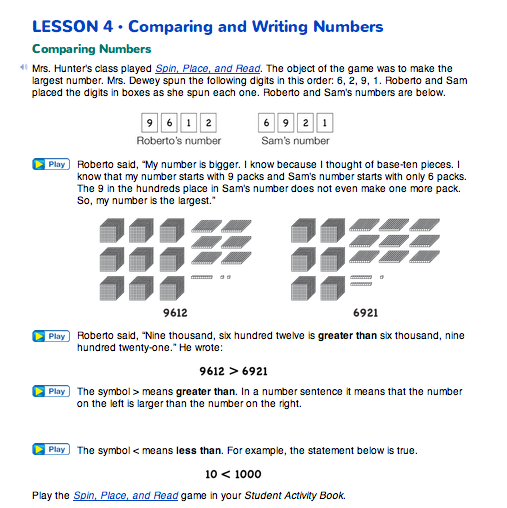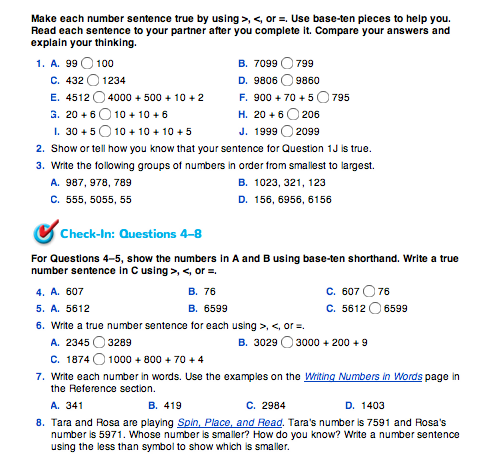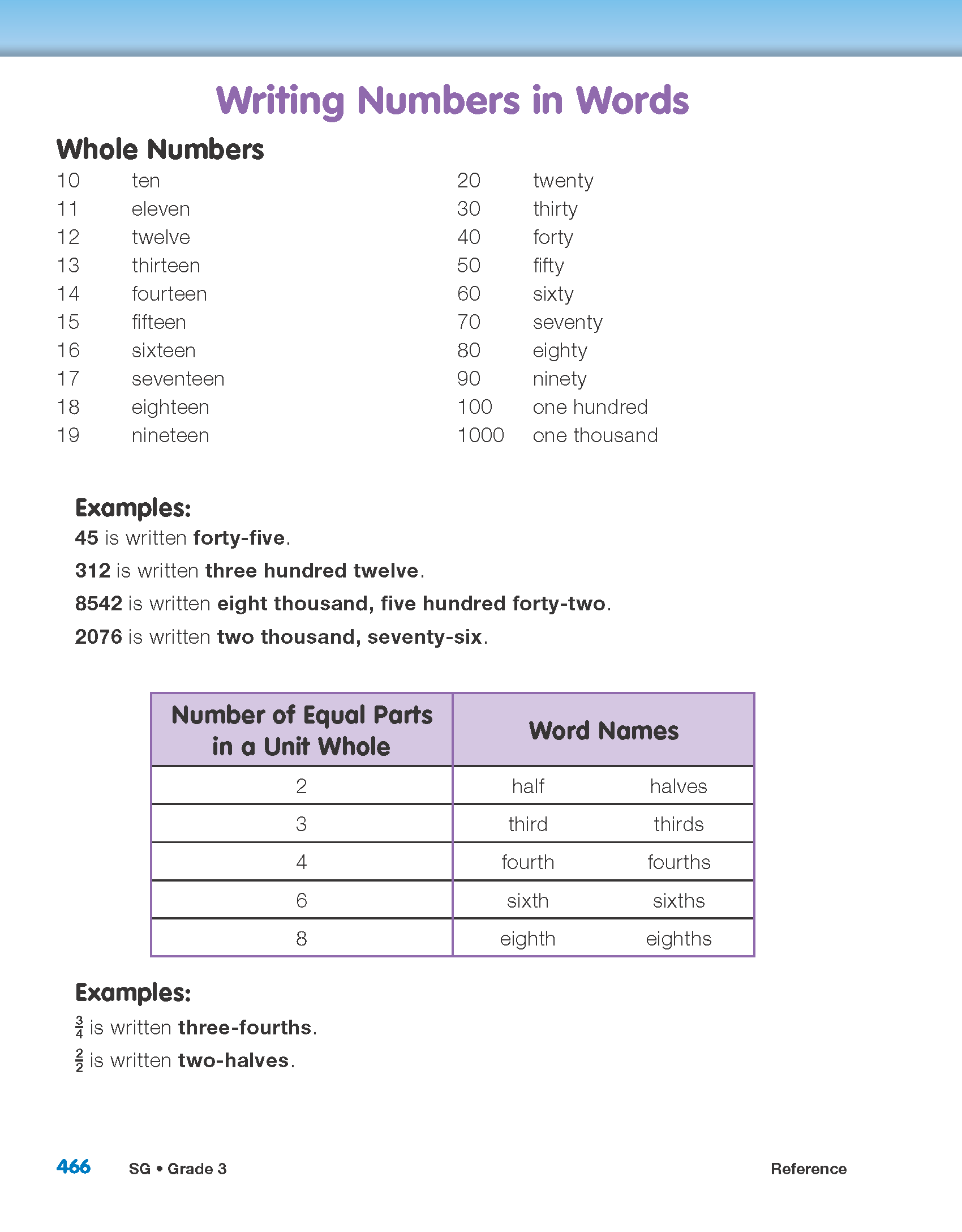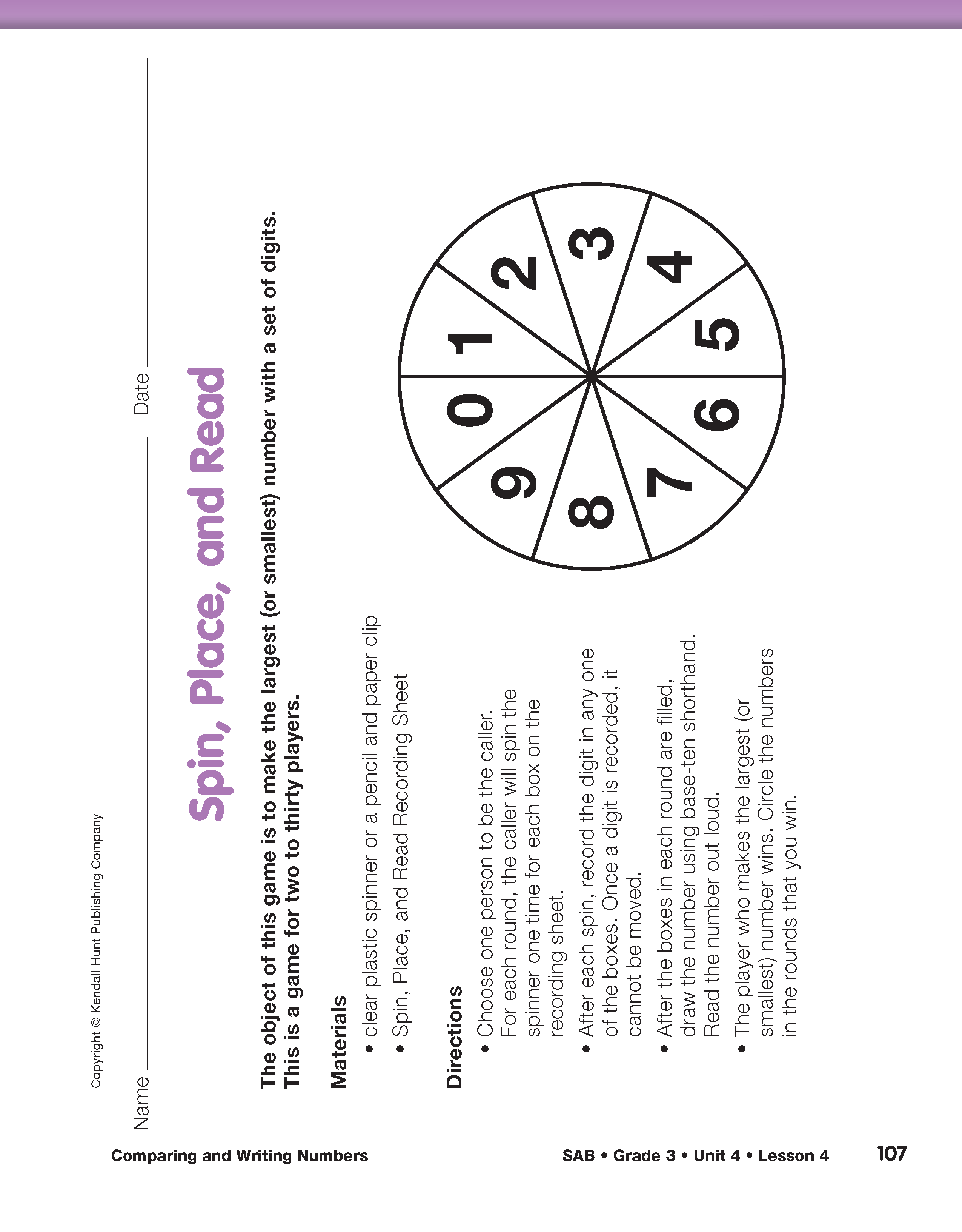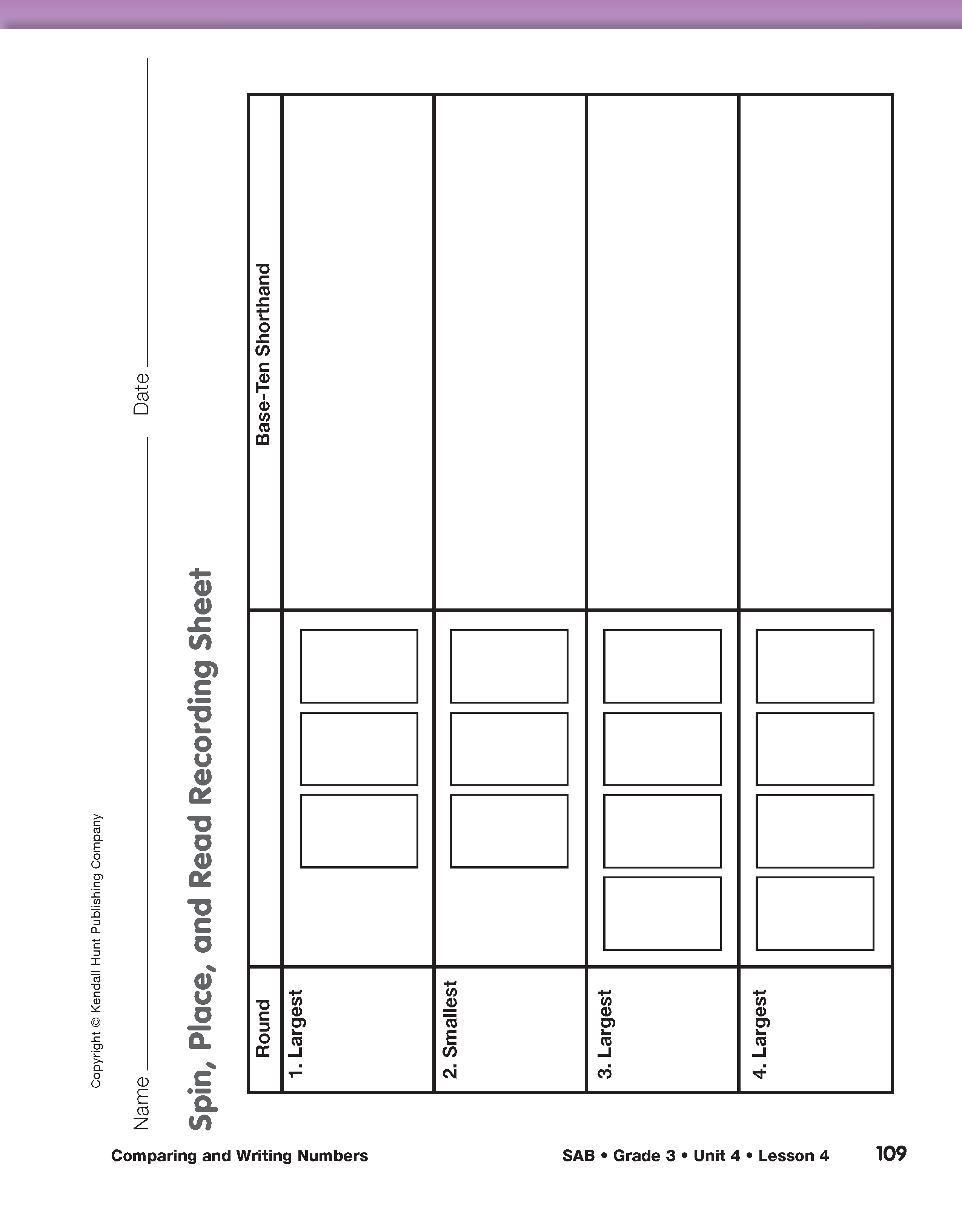Comparing and Writing Numbers
Est. Class Sessions: 1–2Developing the Lesson
Play Spin, Place, and Read. Refer students to the Comparing and Writing Numbers pages in the Student Guide. A short vignette describes a discussion in which students compare numbers they have made while playing Spin, Place, and Read. After reading through this page, introduce the game directions, using the Spin, Place, and Read pages in the Student Activity Book.
Demonstrate playing one or two rounds of the game. Display the Spin, Place, and Read Recording Sheet section from the Student Activity Book. Start with three boxes for a three-digit number. Agree to try to make the largest number. Display the spinner on the Spin, Place, and Read page and ask a volunteer to spin three times calling out each digit. Have students play on scrap paper and allow room for writing base-ten shorthand for their numbers. See Figure 1.
At the completion of each round, discuss how students know which number is the largest (or smallest). Use the following discussion prompts. The sample student responses are based on the digits 9, 5, 7.
Ask:
Play several rounds of the game, increasing the number of boxes for digits and changing the goal to finding the smallest number. You can play the game as a class with a student serving as the “caller.” Or, students can play in pairs or small groups using the Spin, Place, and Read Recording Sheet in the Student Activity Book. Depending on how you organize the game, use opportunities to practice reading numbers, using the symbols for greater than and less than, and writing numbers in words with your students either during play or in a discussion following the game.
Read Numbers. This is an opportunity for students to practice reading numbers correctly. For example, to read 6921, they need to identify the place of the first digit to begin. Since the first digit is in the thousands place, the number is read “six thousand, nine hundred twenty-one.” Encourage students to read the numbers without an “and” as the “and” is reserved for reading decimal points.
Use the Symbols < and >. During discussions of which number is larger (or smaller) introduce the greater than and less than symbols. When students report which numbers are larger (or smaller), model reading the numbers and writing the symbols:
975 > 957
Point out that the symbol is wide on the side where the larger number is.
Write Numbers in Words. Model writing a few of the numbers in the games in words. Point out to students that numbers are written in the same way that they are read. Show students that they can find the correct spelling of number words and examples of two-, three-, and four-digit numbers written in words on the Writing Numbers in Words page in the Reference section of the Student Guide.
Compare Numbers. Refer students back to the Comparing and Writing Numbers pages in the Student Guide. Display the following number sentences and ask student volunteers to complete them using the >, <, or = symbols.
1102  1120 (<)
1120 (<)
308  30 + 8 (>)
30 + 8 (>)
5000 + 60 + 2  5602 (<)
5602 (<)
40 + 7  20 + 20 + 7 (=)
20 + 20 + 7 (=)
Assign Questions 1–3 to student pairs. Remind students that they can use the Writing Numbers in Words page as a guide as they complete the questions.
Assign Check-In: Questions 4–8. As students are working, ask them to read the numbers in the problems out loud and explain how they decided which number was larger or smaller. Encourage students to think of the size of base-ten pieces to help them complete the number sentences and explain their thinking.













